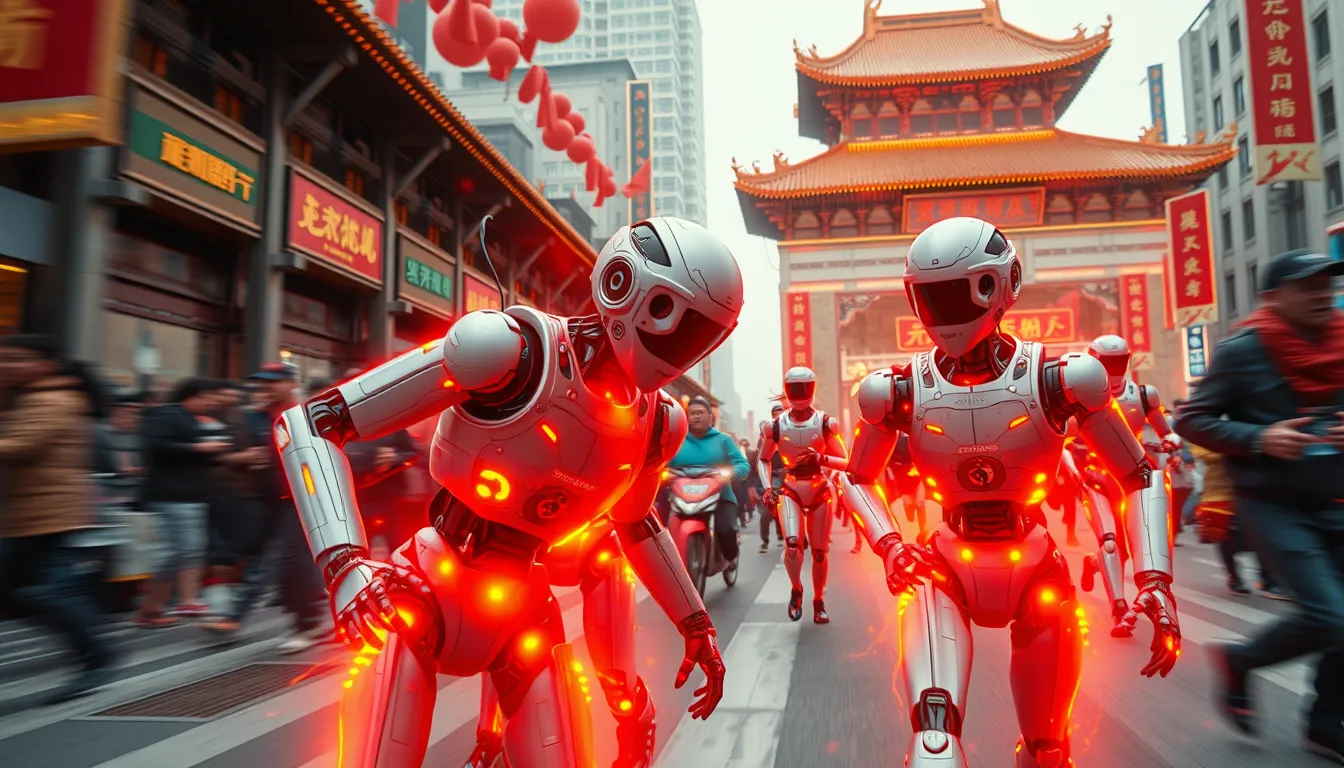Cutting-Edge Humanoid Robotics: Innovation in Endurance
Introduction to the World of Humanoid Robotics
In recent years, humanoid robotics has moved from the realm of science fiction to vivid reality. Today, advancements in robotics innovation are opening new possibilities not only in industrial applications but in sports and endurance testing robotics as well. With a focus on improving robotic mobility and overall system resilience, researchers and engineers are pushing the boundaries of what robots can do. This article examines the multiple challenges faced by these advanced machines, including overheating issues in robots, mechanical instability, and other robot design challenges.
Robotics Innovation and the Rigors of Endurance Testing
Robotics innovation is at the heart of today’s technological revolution. As engineers work to improve robotic mobility, they integrate both hardware advancements and cutting-edge artificial intelligence to bolster performance during high-stress conditions, such as endurance testing robotics in long-distance running events. The constant evolution in design is evident, particularly as teams strive to overcome sensor fusion challenges in robotics endurance, a key area of focus that promises to extend the operational lifespan of these machines.
Confronting Technical Hurdles: Overheating and Mechanical Instability
One of the most critical issues in humanoid robotics is the recurrent overheating problems. As these robots are designed to perform repetitive and complex motions, their components often experience thermal stress. Engineers have documented how overheating affects humanoid robots in endurance sports, noting that heightened energy output causes thermal thresholds to be breached. When these systems overheat, they slow down or temporarily shut down, affecting both performance and safety.
Similarly, mechanical instability in robots poses a significant barrier. Unlike humans, who have evolved balance and precise coordination over thousands of years, robotic systems must rely on pre-programmed motions that can falter when faced with irregular surfaces. This mechanical instability contributes to frequent missteps and balance issues, especially when the robots are tested over extended courses or rugged terrains.
Case Study: Robotic Mobility Challenges at the Beijing Half Marathon
A dramatic demonstration of these challenges occurred during the recent Beijing half marathon. In this high-visibility event, various prototypes of humanoid robotics were put through their paces. The harsh test environment revealed several vital issues in robot design challenges where the machines, despite their advanced programming, struggled on the uneven, unpredictable course.
How Overheating Affects Humanoid Robots in Endurance Sports
At the marathon, overheating was a predominant concern. The robots, engineered to simulate human endurance, encountered severe performance drops when internal systems began to overheat. This case study on how overheating affects humanoid robots in endurance sports highlights the gap between controlled laboratory environments and real-world conditions. The machines often had to pause to cool down, causing them to lose competitive pacing and overall performance momentum.
Sensor Fusion and the Design Challenges in Robotics
Beyond the thermal challenges, sensor fusion remains a core issue in robotics innovation. Effective sensor fusion—the integration of data from multiple sensors—allows a robot to make real-time decisions about navigation and stability. However, the robotics community has yet to fully resolve sensor fusion challenges in robotics endurance. Combining data accurately, especially under the duress of extensive movement and challenging terrain, is central to overcoming robot design challenges and improving overall performance.
Future Directions: Designing Stable Humanoid Robots for Rugged Terrain
Looking ahead, the community is focusing on designing stable humanoid robots for rugged terrain. Improvements in material science, energy efficiency, and sensor technology are expected to lead to robust solutions. In particular, efforts are underway to integrate advanced cooling systems and more effective sensor arrays. These enhancements not only reduce overheating issues in robots but also address mechanical instability in robots, paving the way for a new generation of durable, high-performance machines.
In addition, innovative research in robotics innovation provides promising avenues for developing systems that can adapt to varying environmental conditions. For further reading on breakthroughs in robotic mobility, visit the IEEE website at IEEE for detailed research and insights.
Conclusion: Paving the Way for Breakthroughs in Humanoid Robotics
The Beijing half marathon served as more than just an endurance test—it was a real-world laboratory where the challenges of humanoid robotics were vividly exposed. While the event threw light on overheating issues, mechanical instability, and sensor fusion challenges in robotics endurance, it also fueled optimism in the technological community. Every stumble and temporary malfunction is a stepping stone towards more resilient designs and improved robotic mobility.
With ongoing advancements in robot design challenges and an unwavering commitment to overcoming technical barriers, the future of humanoid robotics appears promising. The lessons learned from endurance sports, like the Beijing half marathon, offer valuable insights that will drive robotics innovation and lead to breakthrough designs. As researchers continue to refine these systems, the gap between current limitations and future possibilities narrows, heralding a new era where humanoid robotics not only mimic human form and function but also excel in the demanding realms of endurance and rugged terrain.
In summary, the evolution of humanoid robotics is a testament to human ingenuity and the relentless pursuit of improvement. The challenges detailed here—ranging from how overheating affects humanoid robots in endurance sports to overcoming robotic mobility challenges in competitive environments—underscore the transformational impact of sustained innovation in this field. As technology continues to advance, the promise of robust, efficient, and truly mobile humanoid robots moves closer to reality, revolutionizing how we perceive and interact with machines in every facet of life.


























